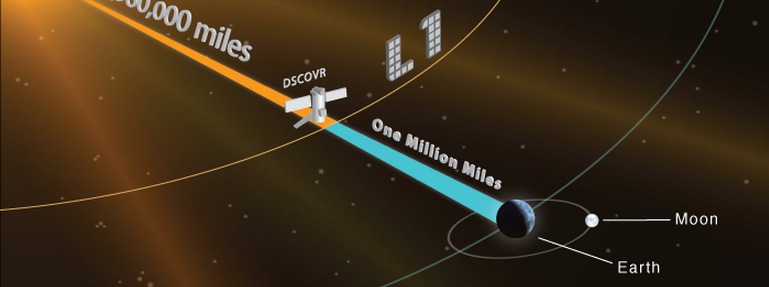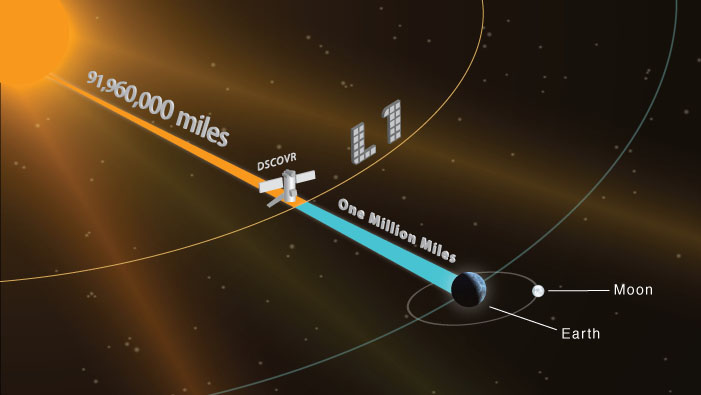DSCOVR reached its orbit around 1st Lagrange point

NOAA's Deep Space Climate Observatory (DSCOVR), launched on February 11, 2015, has reached its final destination on June 7 and entered orbit around the 1st Lagrange point (L1), the neutral gravity point between the Earth and Sun, approximately 1.5 million km (~1 million miles) from Earth.
After about 30 days, when final instrument checks are completed, DSCOVR will enable improved measurements of solar wind conditions to enhance NOAA’s ability to warn of potentially harmful solar activity.
In addition, DSCOVR's Earth-observing instruments will view the entire sunlit Earth from sunrise to sunset at an almost constant scattering angle between 165–178° and gather a range of measurements from ozone and aerosol amounts, to changes in Earth's radiation budget – the balance between incoming radiation (largely from the Sun) and that which is reflected from Earth. This balance affects our climate.
Data from DSCOVR, coupled with a new forecast model set to come online in 2016, will enable NOAA’s space weather forecasters to predict geomagnetic storm magnitude on a regional basis.

DSCOVR will eventually replace NASA’s Advanced Composition Explorer (ACE) research satellite as America’s primary warning system for solar magnetic storms headed towards Earth.
Featured image credit: NOAA/NESDIS

Commenting rules and guidelines
We value the thoughts and opinions of our readers and welcome healthy discussions on our website. In order to maintain a respectful and positive community, we ask that all commenters follow these rules.